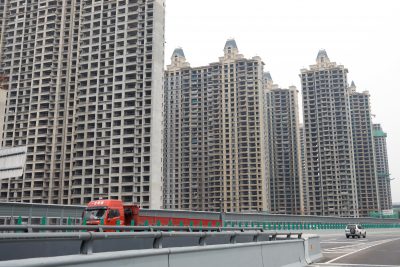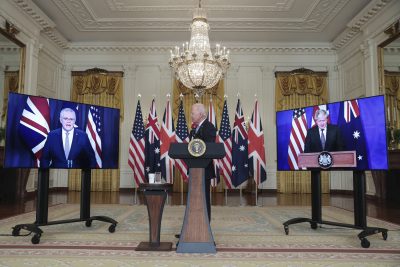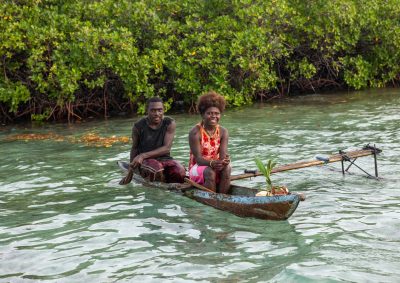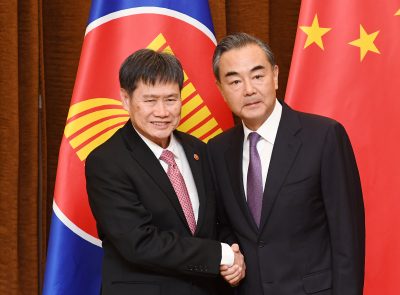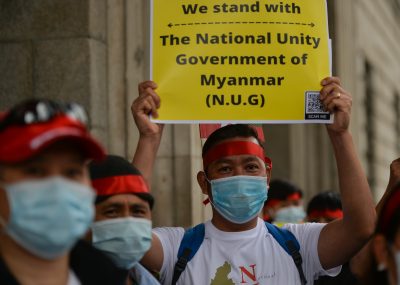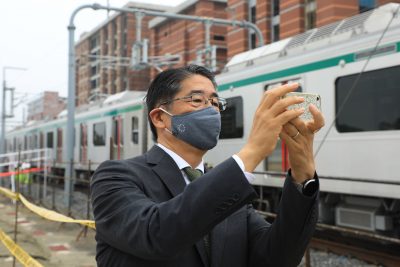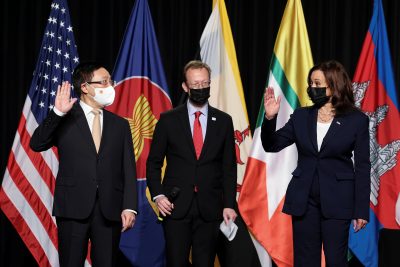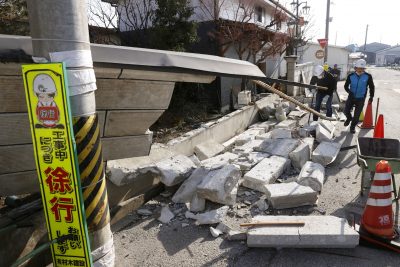Author: Lawrence Repeta, Seattle
In the early days of the COVID-19 pandemic, while governments in many countries issued mandatory lockdown orders backed by penalties for non-compliance, Japan’s did not. In March 2020, the Diet amended the infectious disease control law to add COVID-19 to the diseases covered but did not provide penalties for non-compliance with government requests to limit activities. International news organisations reported that Japan’s Constitution ‘would need to be amended to impose and enforce a lockdown’.
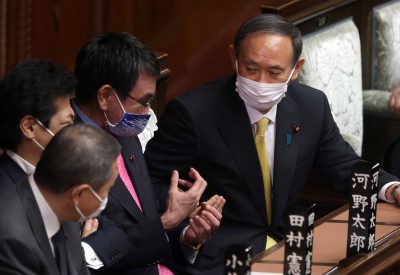
The suggestion that effective action required constitutional change was no surprise. The Liberal Democratic Party (LDP) has been calling for change to the democratic Constitution since it was founded in 1955. One key proposal is the creation of an ‘emergency powers’ provision. But while the pandemic is a crisis that calls for emergency action, an effective response does not require constitutional change.
Article 41 of Japan’s Constitution makes the Diet ‘the highest organ of state power’ and the ‘sole law-making organ of the state’. The Diet holds the power to pass laws that limit individual freedoms to protect public health. It has done so many times. The infectious disease control law and the mental health law provide power for mandatory examinations and hospitalisations. Following the 2011 nuclear meltdown at Fukushima, then prime minister Naoto Kan issued a mandatory evacuation and other orders based on laws that grant such power.
With COVID-19 case numbers on the rise and new variants spreading, the Diet revised the infectious disease law again in February 2021. This time the revision did provide for mandatory orders backed by penalties, albeit relatively small ones. Under one provision, restaurants and bars that do not follow orders to reduce operating hours can be fined up to 300,000 yen (US$2700).
This provision was challenged in court six weeks later. The plaintiff is the popular restaurant chain Global Dining, which received an order from Tokyo Governor Yuriko Koike to close its restaurants by 8pm each night. The company president declared that the order violated his right to free expression and his company’s right to do business.
There are two readily apparent constitutional claims available to Global Dining and other potential plaintiffs. The first is that Governor Koike’s order improperly restricts constitutionally protected freedoms, including the right to do business. This claim is unlikely to succeed because the Diet holds the broad power described above and Japan’s courts rarely overturn Diet action.
In more than seven decades of interpreting the Constitution, the Supreme Court has held legislation unconstitutional on only 10 occasions. When the Court turns away challengers like Global Dining, it frequently rules that legislation serves the ‘public welfare’ under Constitution Article 13 and is therefore acceptable. It’s hard to imagine a more important public welfare interest than protection from infectious disease.
Another potential claim is based on Constitution Article 29(3), which requires the government to pay compensation when it confiscates private property. But the standard interpretation of Article 29(3) requires compensation only when specific parties are affected by government action, not in cases like infectious disease control where measures affect a broad spectrum of society.
In comments made on 3 May 2021, Japan’s Constitution Day, Prime Minister Yoshihide Suga suggested that the government needs constitutional emergency powers to effectively address crises like COVID-19. Suga has since announced his resignation and Japan will soon have a new LDP Prime Minister. Suga was the handpicked successor to Shinzo Abe, who filled the prime minister’s shoes himself for eight long years. The leading candidates to replace Suga have not shown Abe’s evangelistic fervor for constitutional change, but they do represent the LDP mainstream and the demand for constitutional emergency powers is in the party’s DNA. The LDP’s comprehensive proposals issued in April 2012 include an entirely new provision that would grant the Prime Minister power to declare an emergency in an extremely broad range of circumstances. Since 2016, the LDP has included ‘emergency powers’ among the four constitutional proposals of utmost priority. COVID-19 pushed it to the top of the list.
Moreover, continued advocacy for constitutional change by LDP leaders is having an effect. On 1 May 2021, Kyodo News reported that more than half its survey respondents believe Japan must add an emergency clause to the Constitution to better respond to COVID-19 and other disasters.
The notion that governments should have emergency powers to deal with crises is common sense. Japan’s Diet has already passed several laws that grant such powers to the executive offices of government for use in defined circumstances. The primary effect of the LDP’s constitutional proposal would be to reallocate this authority from the Diet to the Cabinet. Unlike the Diet, which generally operates in the open and allows the participation of opposition party members, the Cabinet works behind closed doors and ordinarily excludes the opposition. Granting independent constitutional authority to the Cabinet, as the LDP proposes, would promote secrecy and could become the first step towards establishing authoritarian government.
With big majorities in each house of the Diet, the LDP–Komeito alliance holds the power to pass whatever legislation is necessary to authorise effective government action in an emergency. The important question posed by COVID-19 does not concern the Constitution — it is why Japan’s leaders have been so reluctant to employ the power they already hold through the parliament. It seems that Prime Minister Suga and others seek to deflect attention from the proper focus on this question.
Lawrence Repeta has been a lawyer, business executive, and law professor in Japan and the United States. He retired from the Meiji University law faculty in 2017.
This article appears in the most recent edition of East Asia Forum Quarterly, ‘Confronting crisis in Japan’, Vol 13, No 3.
The post COVID-19 is a weak excuse for changing Japan’s Constitution first appeared on East Asia Forum.
Source link







